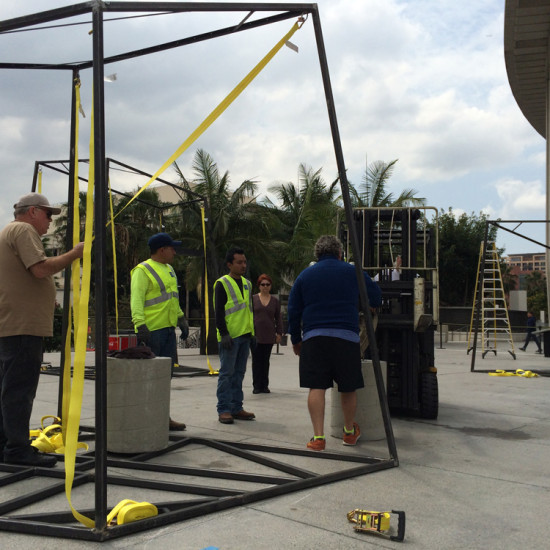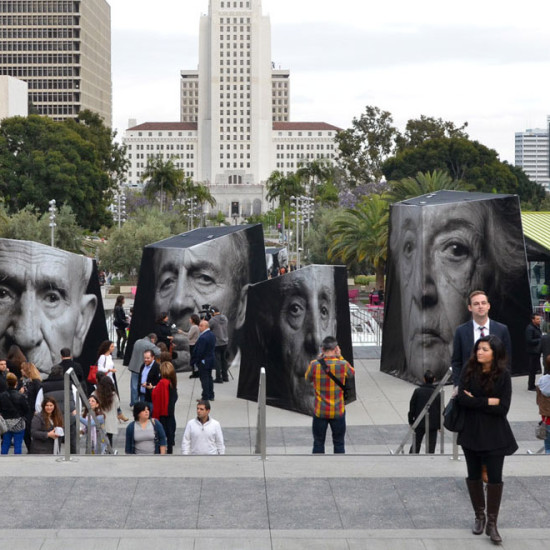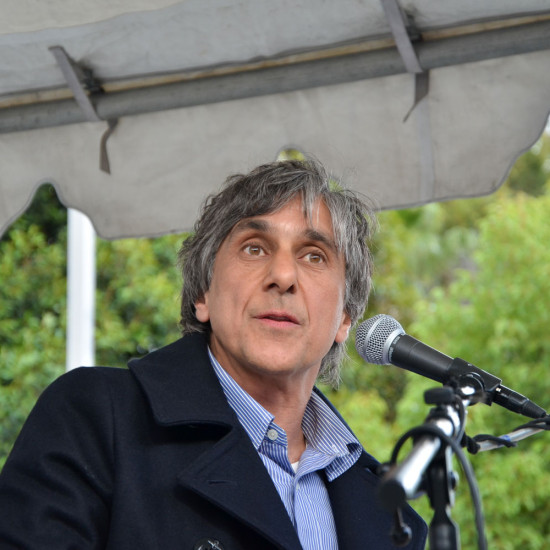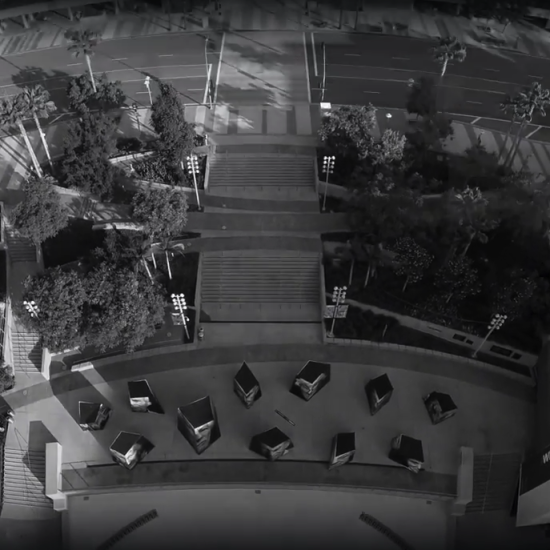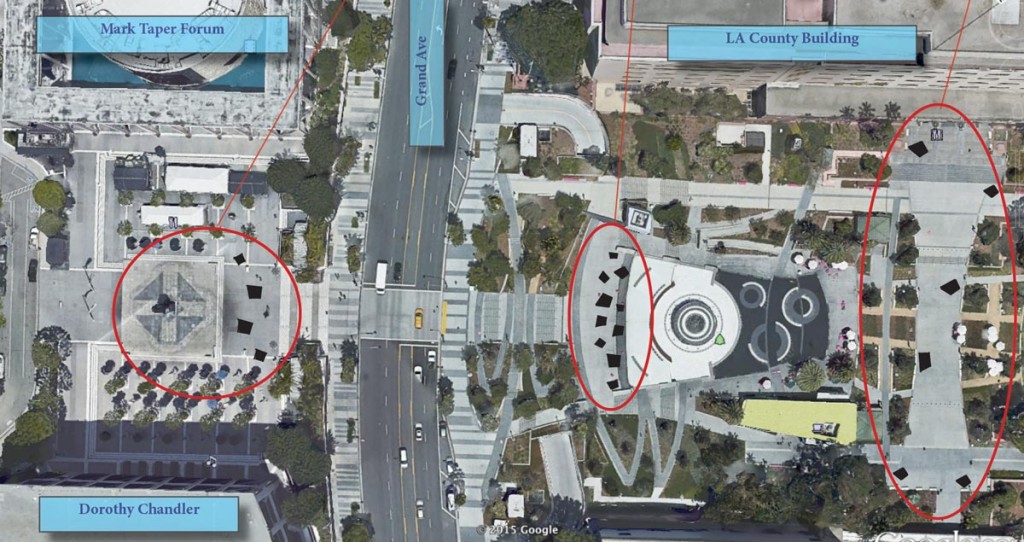The Installation

iwitness is a large-scale public art installation by artists Ara Oshagan, Levon Parian and designer Vahagn Thomasian on three levels at the Music Center and Grand Park in Downtown Los Angeles.
iwitness installation consists of an inter-connected network of towering asymmetrical photographic sculptures wrapped with massive portraits of eyewitness survivors of the Armenian Genocide of 1915. The sculptures have no right angles and their irregular angular shapes speak to an unbalanced world, continually at risk of war, ethnic cleansing and genocide—crimes against humanity that the Genocide survivors have witnessed with their own eyes. They range in height from eight to fifteen feet and at night are illuminated from the inside like lanterns.
iwitness is a temporary memorial to the Armenian Genocide centennial commemorated this April by Armenians worldwide. The first genocide of the 20th century was a blueprint for the numerous genocides that followed: from the Holocaust, Cambodia, and Rwanda to Bosnia, Darfur, and Syria today. The effects of the brutal trauma as well as Turkey’s continued denial of the facts are still felt today, 100 years and many generations later.
The installation pays homage to these resilient, courageous and industrious men and women who, against all odds, survived the Turkish government’s systematic attempt to annihilate them. Most all survivors in the series are Los Angeles area residents who fled the destruction in their homeland to re-establish new lives in the U.S. and in a vibrant global diaspora.
Each of these survivors implore us to hold perpetrators of genocide and mass atrocity accountable, no matter where it occurs and against whom, and to take a strong stand for worldwide peace and tolerance.
“In the haunting black-and-white photographs, the subjects have been stripped of their surroundings. Their pasts, the lives they had known, had been obliterated. The darkness behind these survivors represents the silence from which they have now emerged, articulating their experiences for the world to know.
The photographs preserve the two essential markers of one’s physical identity: the face and hands. Noticeably, the passage of time, manifested in the furrowed foreheads and wrinkled, vein-marked hands, has not erased the reality or the pain of the Genocide. The intense emphasis on the faces and hands ensures that each survivor is identified and accounted for. These are not headless torsos or indistinct faces. Rather, each instance of survival has been remembered.
These portraits, like the survivors themselves, function as testimonies of the Genocide and the subsequent lives in the Diaspora. In other words, these works are images of resistance. The survivors’ direct, confrontational gazes are no longer those of terrified young children fearfully looking into their perpetrators’ eyes begging for their lives, but rather, they are the defiant eyes boldly looking out and claiming a place—a voice—in history.
In these photographs, the eyes of the survivors meet those of their witnesses. In that momentary instance of the gaze, the Genocide survivor is bequeathing his/her story to the new generation of witnesses. The testimony of these survivors then becomes the testimony of the artists, who inherit the stories and the responsibility, and then in turn, transfer that to the viewers. By entrusting the story to the next generation, there is a transference of the witness role from the sitters to the viewers. In this way, fueled by a newfound sense of responsibility, the viewers are then ignited to preserve and proclaim the stories they have just witnessed.”
Ramela Grigorian Abbamontian, PhD, Professor of Art History

